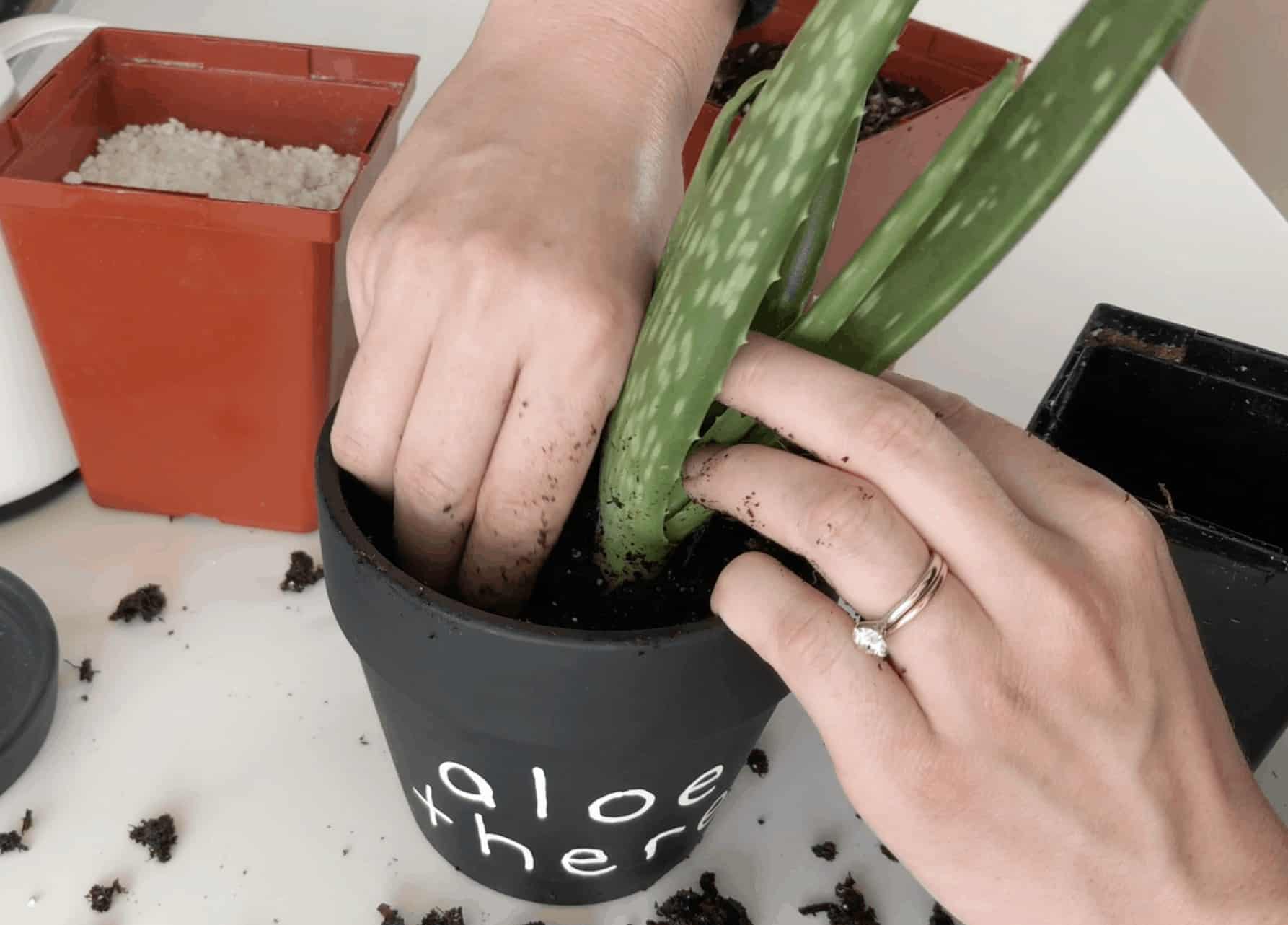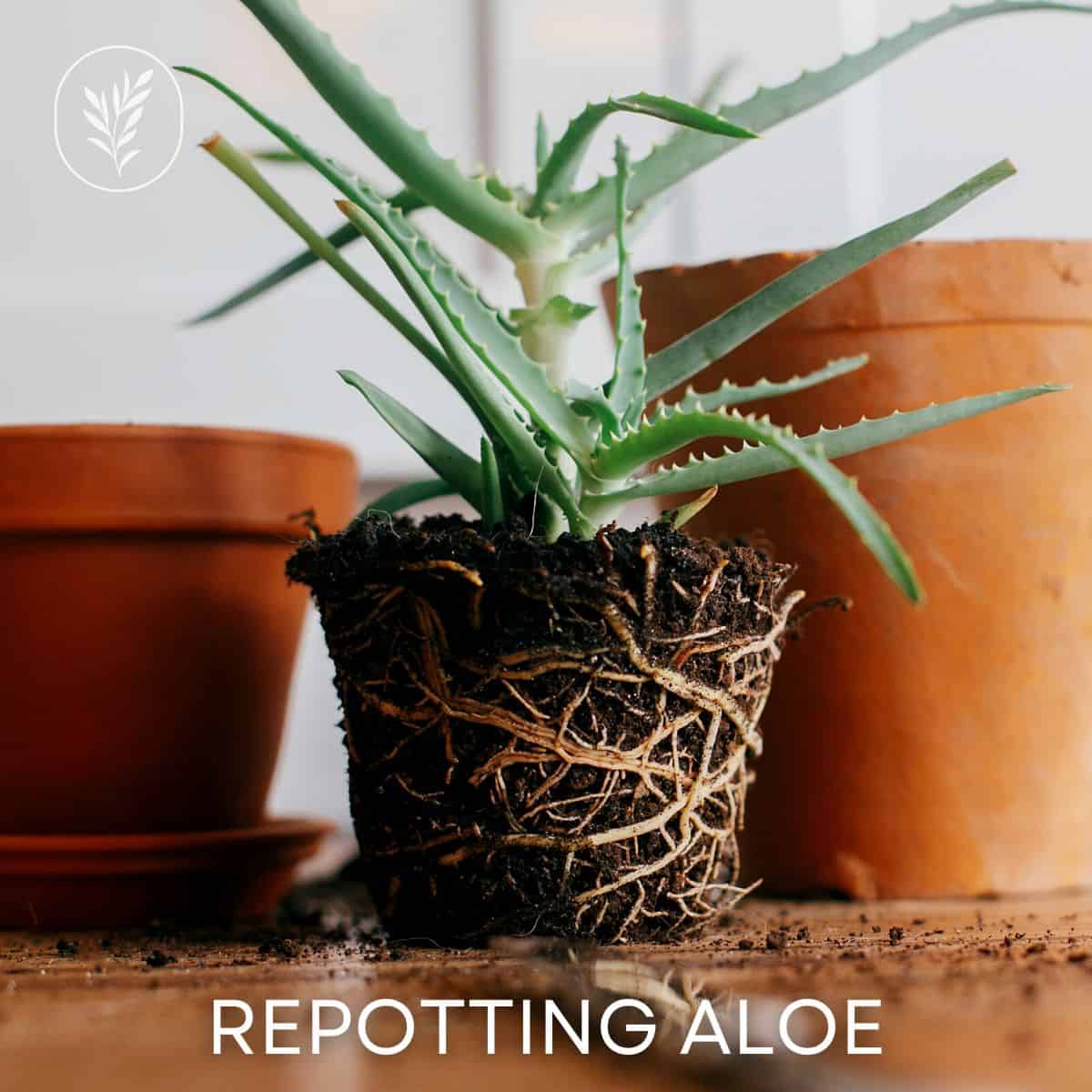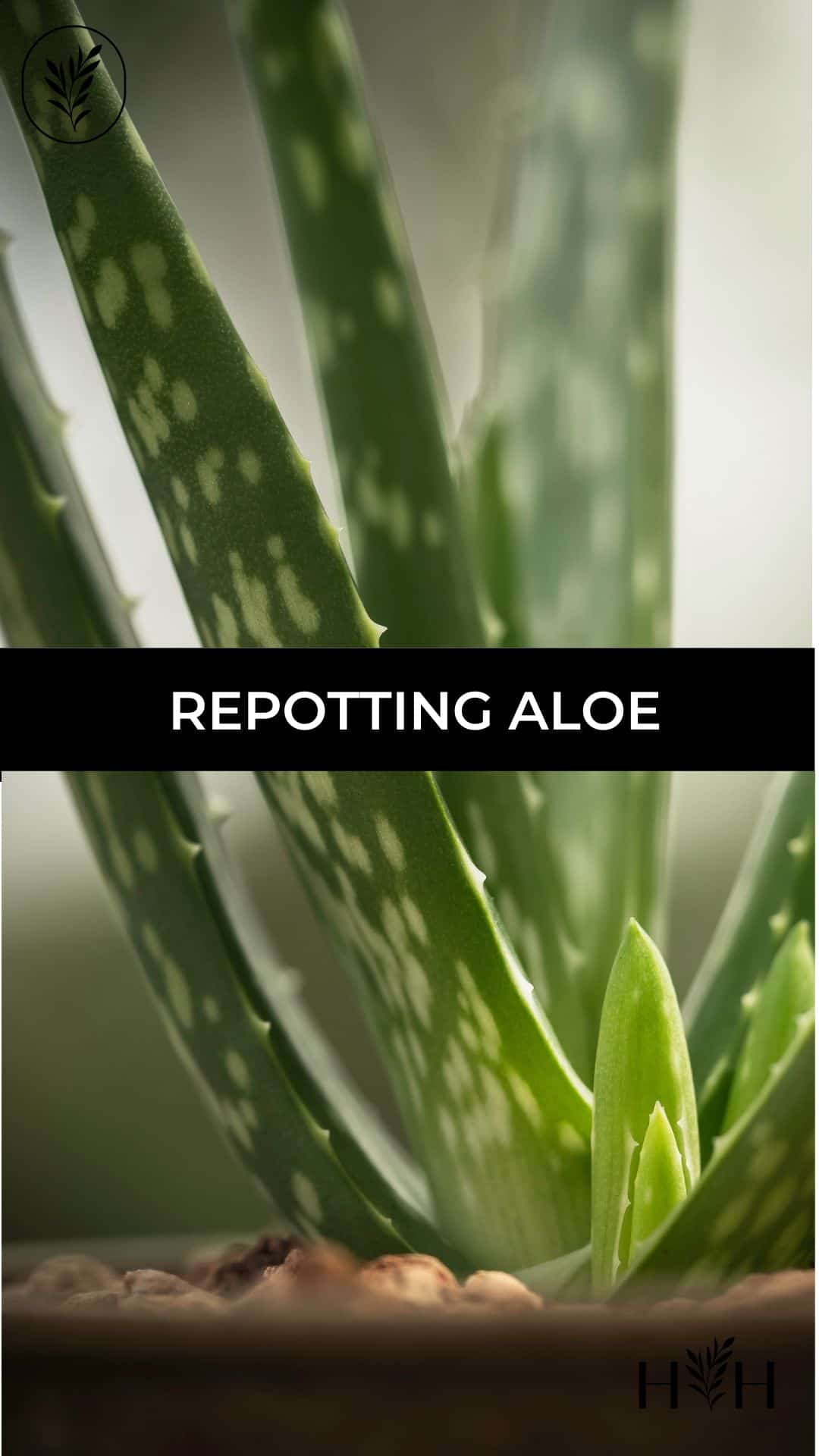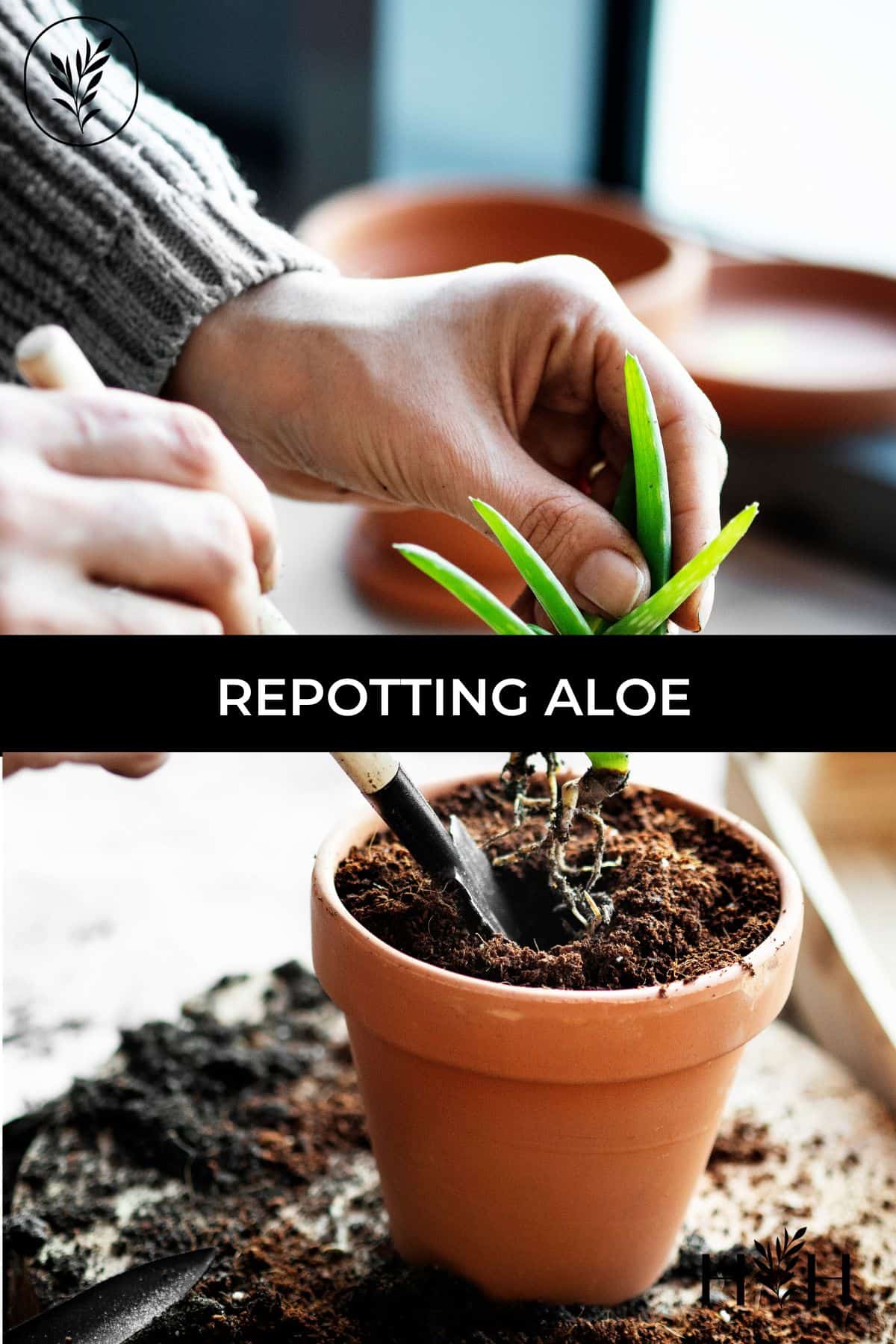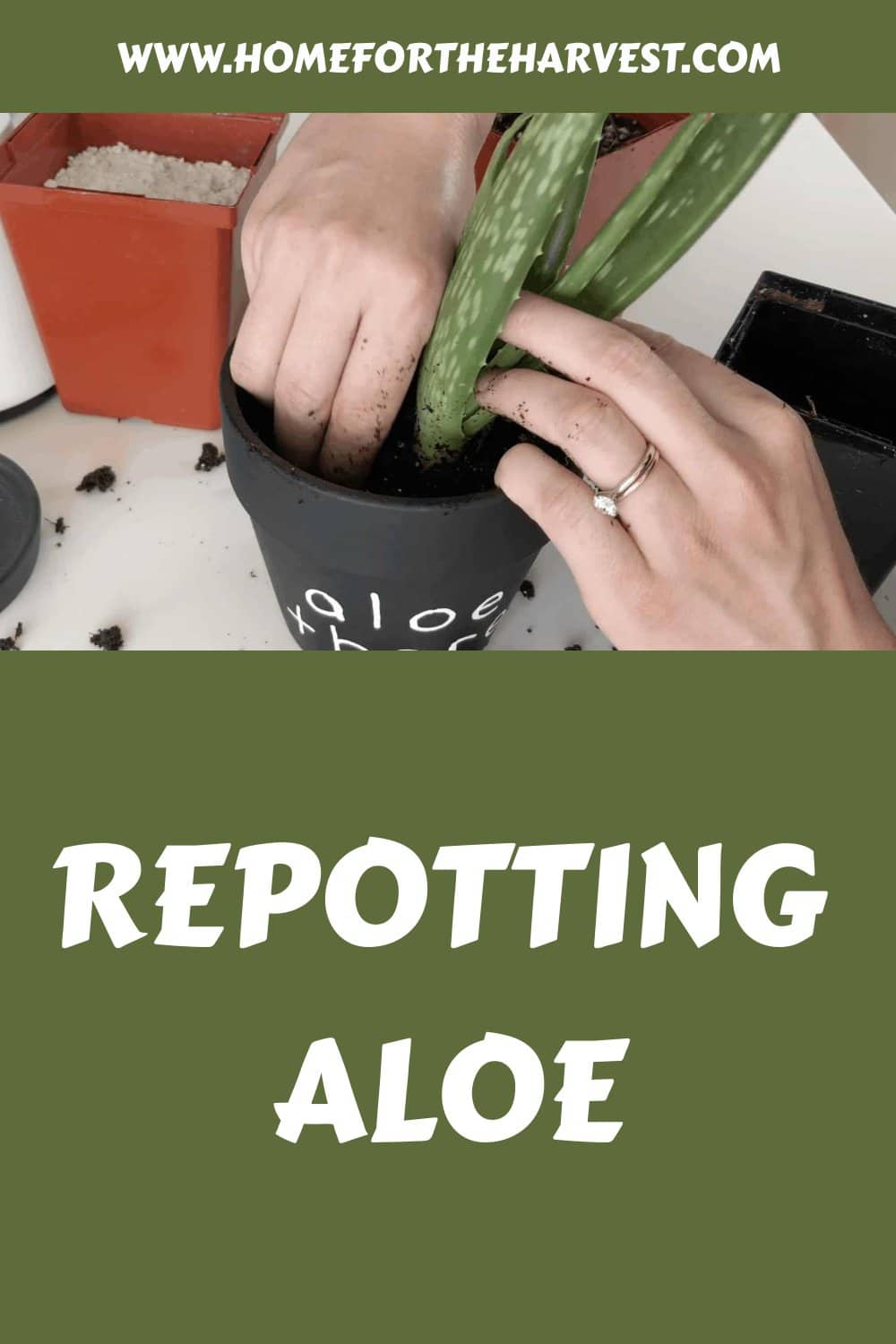Repotting aloe helps the health of the plant by providing fresh soil and new space for the roots. Aloe plants grow best in lightweight cactus potting mix and in planter pots with effective drainage holes.
Aloe plants are generally repotted into slightly larger pots each spring as they grow towards mature size. An established aloe vera might be repotted into the same pot every couple of years by separating off the baby plants and adding some fresh potting mix.
When to repot aloe plants
There are numerous indications that you should repot your aloe plant. The first might be that your plant is now too large and potentially top-heavy for the pot it is in. If the plant is large above the soil, it may also be rootbound in the pot (the thin feeder roots are circling around the outside of the soil ball).
Another reason might be that the aloe plant has created too many pups. Pups are the small little offshoots off the base of the mother plant. The pups can start to grow out of the side of the pot, and the plant will benefit from removing and repotting the offsets separately.
The final reason might be that the potting mixture originally used is spent or overly moist and needs to be replaced with fresh, drier soil. Overwatering can easily kill an Aloe plant and an overwatered plant may need immediate repotting into well-draining soil. This is the perfect reason to repot your aloe plant and give it a healthier living space (especially if it’s struggling).
The best time of year to repot an aloe plant is in the spring when it’s most actively growing. That said, it is possible to repot it at other times of the year, although it’s not optimal.
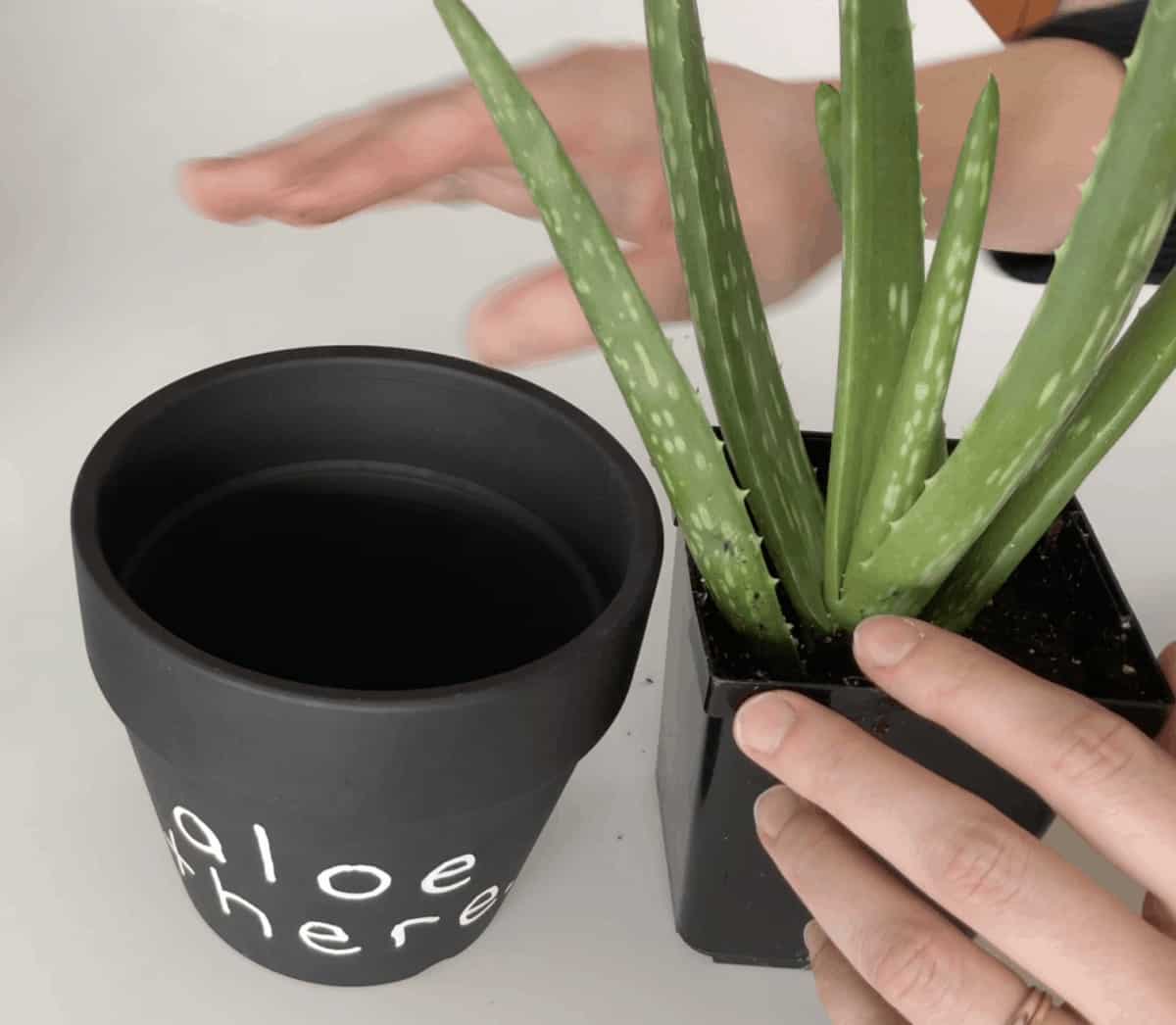
How to repot aloe vera plants
Here’s everything you need for repotting aloe.
Repotting supplies:
- Aloe plant
- Planter (with drainage hole)
- Potting mix (preferably a succulent/cacti mix)
- Garden trowel
1. Choose the right pot
The best pots for aloe plants are those that drain very well and are large enough (and heavy enough) to support the large foliage of a growing plant. Unglazed earthenware and ceramic pots like classic terra cotta provide both breathable, permeable sides as well as substantial weight.
Choose a pot that is no more than one or two inches wider than your current pot. Using a pot that’s much bigger than the current pot can mean the soil takes a long time to dry out. Consistently moist soil can rot the base of your aloe plant, so don’t just pick a giant pot so you don’t have to repot it for a few years. If your plant is already quite large, you can just repot it in the same pot after removing any offsets and trimming the roots.
Choose a pot with a drainage hole. Aloe plants like soil on the dry side. Using a planter made of a porous, breathable material will help allow the soil to dry out between waterings. Planter pots made of terra cotta, unglazed pottery, or concrete are great choices for Aloe and other succulents.
Some planters have a matching saucer that sits under the pot to catch drips. Other large planters are watertight and are generally used as an outer decor planter along with a thin plastic nursery pot liner (the aloe is planted in the nursery pot that drains easily, and then the whole thing gets popped into the watertight outer pot).
2. Use a cactus soil mixture
It’s important to use a soil mixture that’s suited to succulents like aloe. You can use a cactus soil mix or a general potting soil blend mixed with a bit of sand and perlite.
Avoid using outdoor soil. The aloe plant won’t want to hang onto excess water. Use a fresh bag of potting mix and don’t moisten the soil too much before repotting.
3. Water before repotting
An important step to repotting your aloe plant is to water it 24 hours before you intend to repot it (unless the plant has been watered in the last few days). The reason for this is that a plant that has been allowed to dry out almost always suffers from transplant shock when re-potted, and the watering process can be quite difficult if your aloe is really thirsty.
To determine how much water you should give your aloe, take a look at its leaves. They should be plump and shiny with no signs of shriveling or withering. If they’re not quite in this condition yet—and especially if they’re drooping—you may need to wait until the next scheduled watering before moving forward with repotting.
Note: If your aloe plant is suffering from overwatering, do not water it prior to repotting. In this case, remove as much of the moist soil from around the base of the plant and repot it into fresh, dry cactus potting mix.
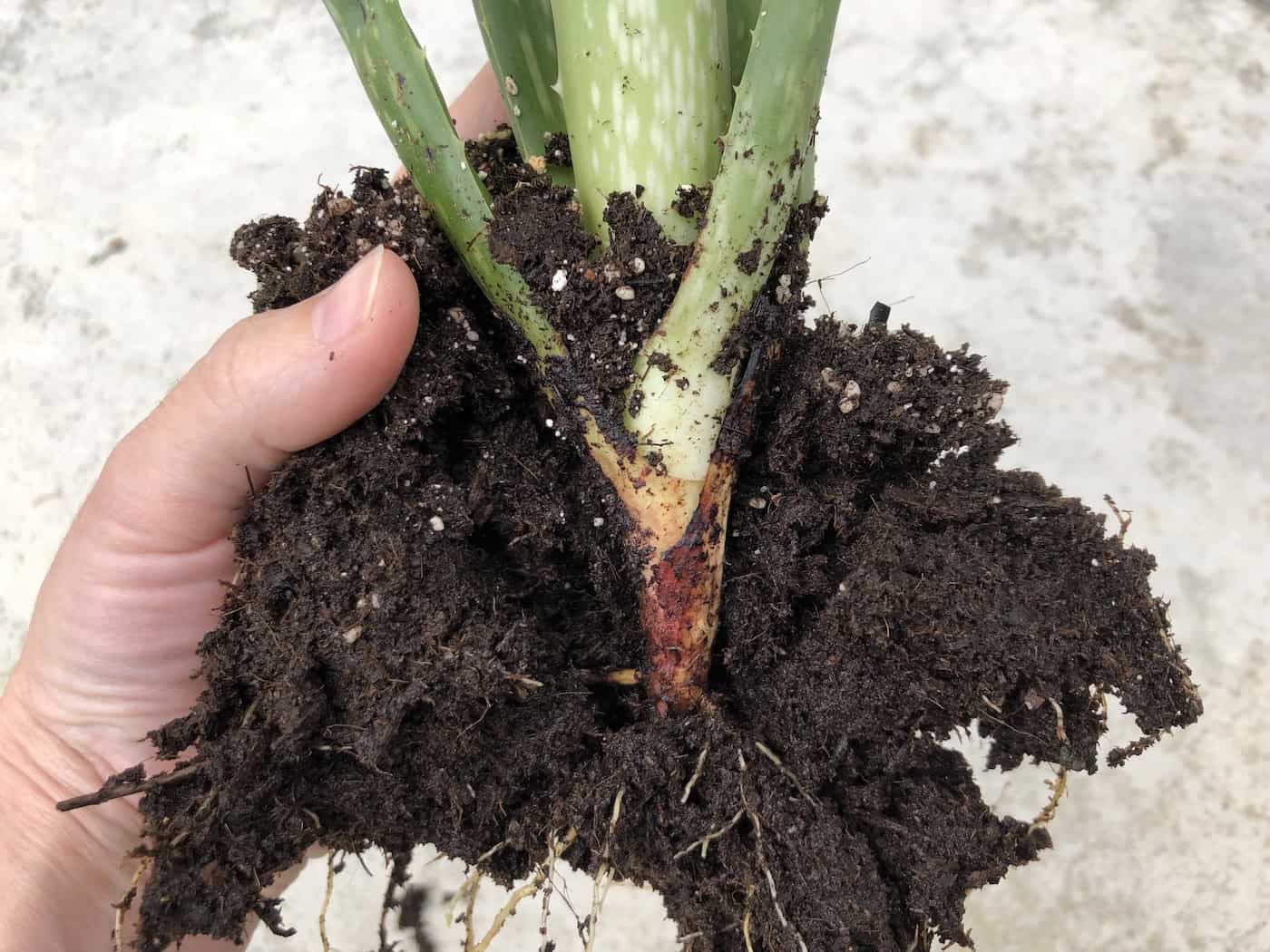
4. Remove the aloe plant
The next step to repotting an aloe plant is to remove it from its current pot. You can do this by using a fork to gently loosen the aloe plant from its soil, then brushing off any lingering dirt with your hands. Be gentle as the aloe plant is delicate and fragile. If the root ball is stuck in the pot, you might need to cut it loose by sliding a butter knife down around the sides. Whichever method you use, move slowly and gently to make the transition easier on yourself and the plant.
Note: If you’d like to propagate your aloe plant by separating the offsets from the mother plant, now is the time! Look for “pups” around the base of the plant. These are little baby plants developing. If they’re over 4 inches tall, remove the pups by pulling them away from the mother plant. They may come off with a gentle tug, or you might need to use a plant knife. Repot each pup up separately in its own pot.
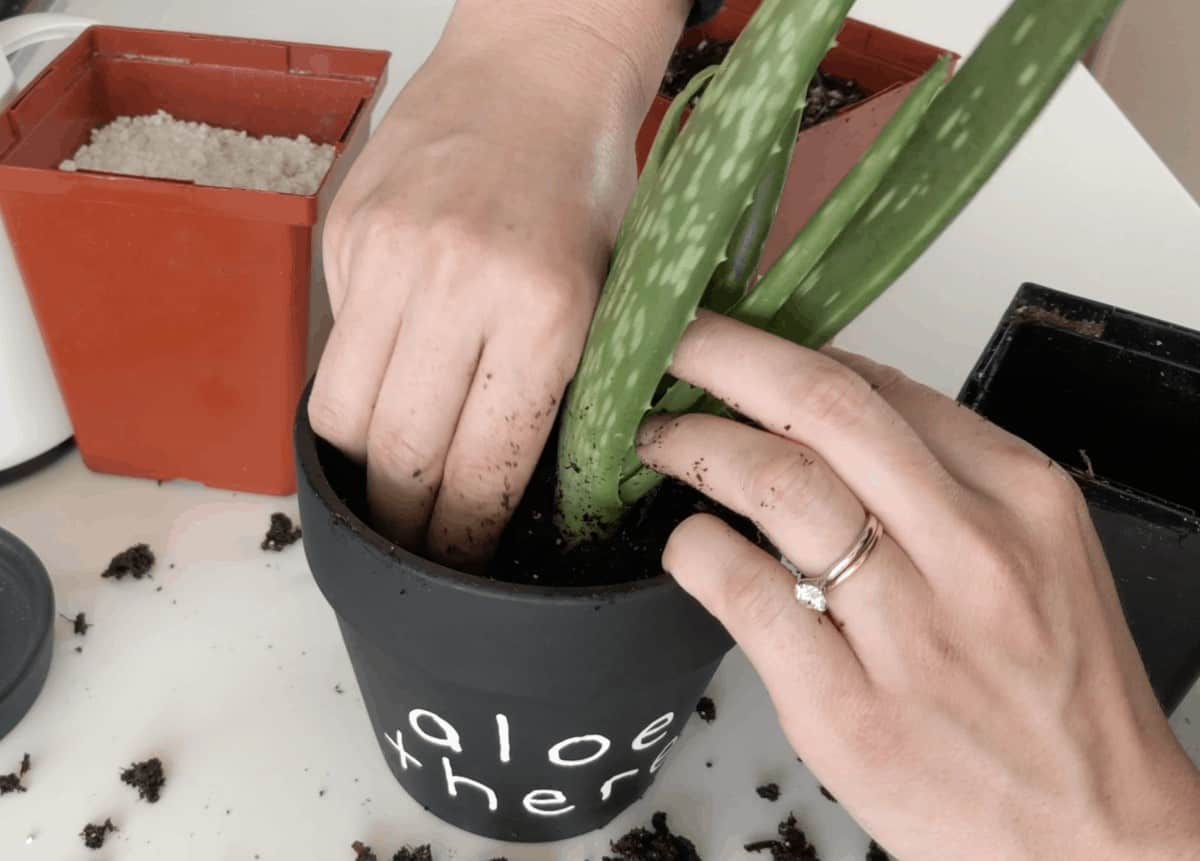
5. Place the plant in the new pot
The next step is to put the plant in its new pot with a good-quality potting mix (as mentioned above), making sure to keep it straight up and down. You don’t want to cover your aloe’s base with too much soil, so do not bury it deeper than it was growing in its previous container. Gently firm the soil down around the base of the plant.
6. Watering your newly repotted aloe plant
The first thing you should do after repotting your aloe plant is to water it. This is mostly to settle the soil down around the base of the plant, but also to allow checking that water is draining easily out of the drainage hole.
Water immediately after repotting and again in about three weeks, using rainwater or distilled water if possible. A good rule of thumb is to wait until the top inch of soil feels dry before watering again; this will keep your aloe plant healthy and thriving.
Note: Do not overwater! Aloes are sensitive plants that appreciate dry conditions between watering times, so don’t be afraid to let the top inch or so of soil dry out before providing more water. If you notice that your plant’s leaves are drooping or curling up at their tips or if the plant just doesn’t look as vibrant as usual, that can be a sign that it needs watering; however, always check with an expert before doing anything drastic like moving your aloe outdoors for summertime (which could kill off its fragile roots).
Aloe plants sometimes like darkness, so feel free to place it in a dark place (or at least out of direct sunlight) for a day or two after transitioning to let it rest.
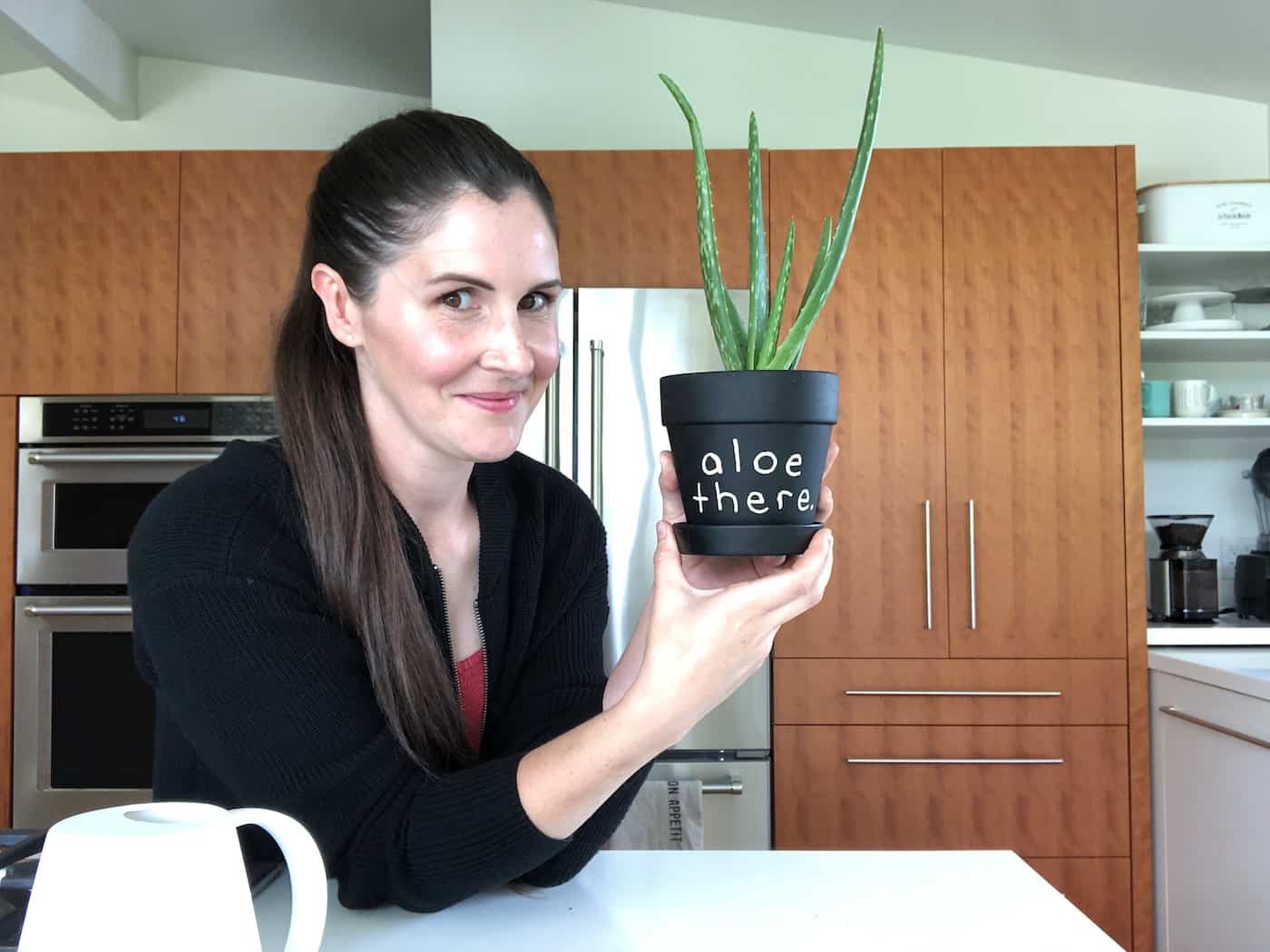
Repotting an aloe plant is easy!
If you’re ready to start repotting your aloe plant, here’s a quick recap on how to do it:
- Make sure your aloe is healthy and happy before you begin! If it’s not, then take the time to heal it before moving forward.
- Don’t worry if your aloe looks a little stressed after you first repot it. It’s normal for them to look like this after being transplanted. If possible, give them a few days out of direct sunlight and with no water in their new pot before watering again.
- Repotting can happen at any time of year if needed…but they will thrive best if done in spring or summer when they are most actively growing.
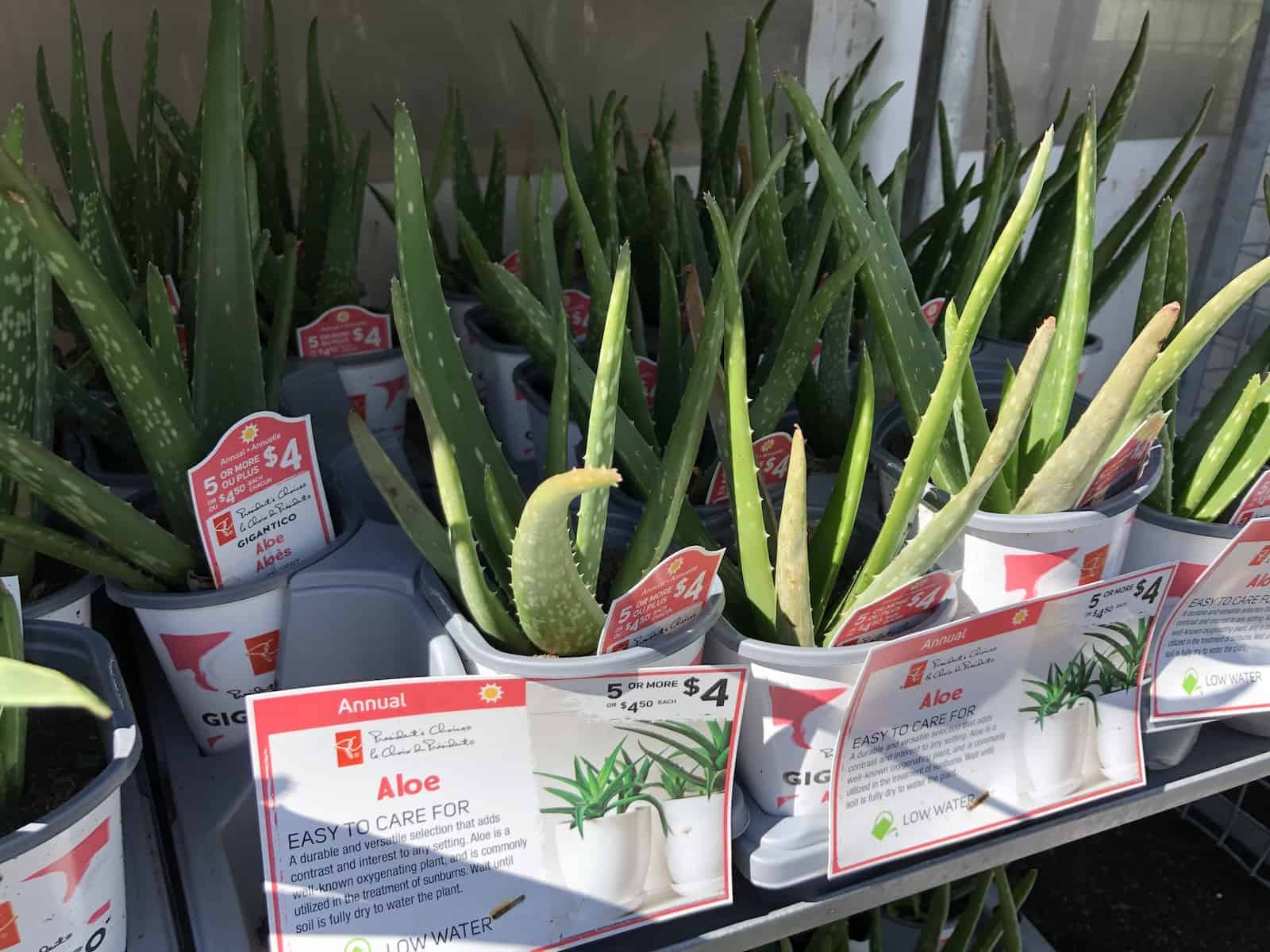
Care after repotting aloe
After repotting, water every couple of weeks (unless very dry). Always allow the soil to dry out between waterings. Look out for mushy, droopy leaves as a sign of overwatering. Also, keep an eye out for pups developing at the base as they can be split off and repotted on their own.


